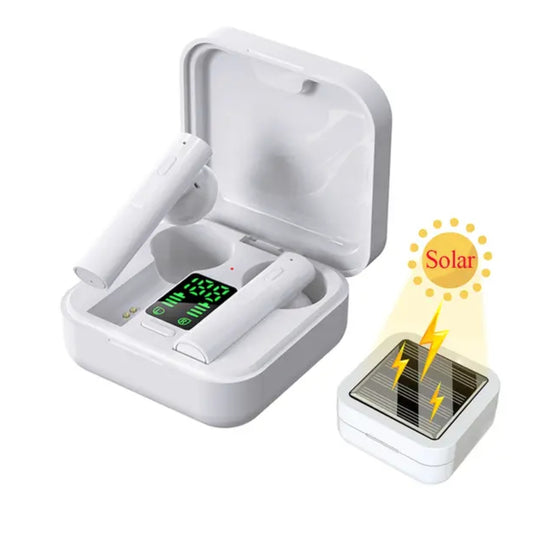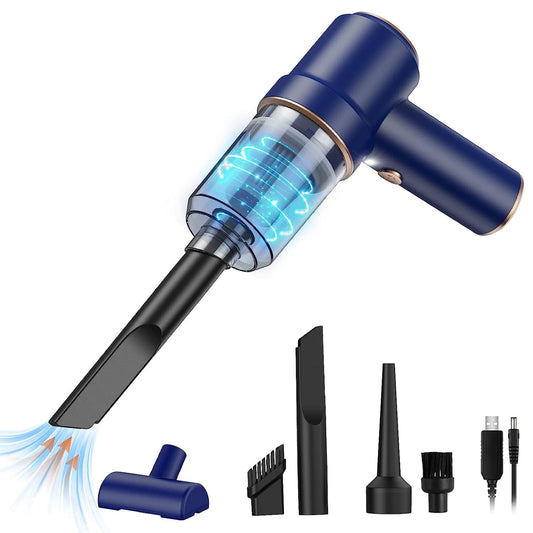A low battery indicator in car is a crucial warning sign that drivers should never ignore. Understanding the dashboard battery light meaning can help prevent unexpected breakdowns and costly repairs. When the light illuminates, it typically signals that the battery or charging system is experiencing issues, and prompt action is required to avoid further damage.
In this article, we will explain what does the low battery light mean, the common causes of a low battery indicator, and how to address the issue. Additionally, we’ll learn about car battery indicators and how to recognize the difference between minor issues and serious malfunctions. By the end, you’ll know the best steps to take when the low battery indicator in car appears and how to extend the lifespan of your car's battery. Keep reading to ensure you're prepared for any battery-related challenges on the road!
What Does the Low Battery Light Mean?
The low battery indicator in car is designed to alert you when your vehicle's electrical system is not functioning correctly. Typically, this light is found on your dashboard, and its purpose is to signal issues related to the car battery or the alternator, which is responsible for charging the battery.
When the dashboard battery light comes on, it often means that the battery isn’t being charged efficiently. This could be due to a failing alternator, a faulty voltage regulator, or the battery itself becoming weak. Understanding what does the low battery light mean can help you take timely action to prevent a dead battery, or worse, being stranded in the middle of your drive.
A steady or flashing low battery indicator in car should never be ignored, as it could indicate that the car's electrical system is at risk.
Common Causes of a Low Battery Indicator in Your Car
There are several potential causes for the low battery indicator in car to light up. Here are the most common:
Faulty Alternator or Voltage Regulator: The alternator plays a key role in charging the car's battery while the engine is running. If the alternator is not functioning properly, your battery won’t receive a charge. Similarly, a malfunctioning voltage regulator can cause fluctuations in the charging voltage, triggering the car battery warning signs.
Battery Issues: Over time, your car battery naturally degrades. Common signs of battery problems include corrosion on the terminals or an old, failing battery. If the battery is no longer able to hold a charge, the low battery indicator in car will alert you that it's time for a replacement.
Electrical System Malfunctions: Issues like faulty wiring or loose connections can prevent the battery from charging properly, leading to a low battery light. These electrical problems may be tricky to diagnose without professional help, but they can significantly impact battery performance.
Learn About Car Battery Indicators
To better understand the low battery indicator in car, it’s helpful to learn about car battery indicators in general. These indicators can come in various forms, depending on your vehicle's make and model.
Visual Dashboard Warning Lights: The most common form of battery indicator is a dashboard light that either glows steadily or flashes. A steady light usually signals a more serious issue, while a flashing light may indicate a temporary problem. Pay close attention to how long the light stays on to help determine its urgency.
Audible Alerts or Notifications: Some vehicles are equipped with additional alerts, such as beeps or system notifications, that provide further insight into the condition of your battery or charging system. These sounds may accompany the low battery indicator in car, signaling the need for immediate attention.
Temporary vs. Critical Battery Warnings: Understanding the difference between a short-lived and a more critical warning can be helpful. For instance, a brief flicker of the dashboard battery light may indicate a temporary fluctuation in voltage, but if the light remains on, it usually means there’s a more significant issue.
What to Do When the Low Battery Indicator Is On
If the low battery indicator in car comes on while you're driving, take the following steps:
Pull Over Safely: If the light stays on, it’s important to pull over to a safe location to avoid further damage. Continuing to drive could potentially cause additional issues to the battery or alternator.
Check for Visible Damage: Once safely stopped, look for visible signs of damage. Check the battery terminals for corrosion and ensure all connections are secure. Corrosion can block the flow of electricity, causing the battery to drain.
DIY Troubleshooting: If you’re comfortable, clean the battery terminals with a mixture of baking soda and water to remove any corrosion. Tighten any loose connections to see if that resolves the issue. These simple steps can sometimes solve the problem and reset the dashboard battery light.
When to Seek Professional Help: If you’re unable to identify the issue or if the light remains on after troubleshooting, it's best to seek professional assistance. An expert mechanic can diagnose issues with the alternator, voltage regulator, or other components that might be causing the car battery warning signs.
Preventive Maintenance for Your Car Battery
Preventive maintenance is key to extending the life of your car battery and preventing issues like a low battery indicator in car. Here are some tips to keep your battery in top condition:
Regularly Check Your Battery: Inspect the battery for signs of corrosion or leaks. Clean the terminals periodically and ensure connections are tight.
Seasonal Checks: Extreme weather conditions—especially cold winters or hot summers—can impact your battery’s performance. Before these seasons, check your battery’s health to ensure it’s ready for the temperature fluctuations.
Professional Inspections: Having a professional mechanic check your battery and alternator at regular intervals can prevent unexpected failures. They’ll also inspect the charging system and replace the battery when necessary.
Tools to Help You Avoid Battery Trouble
One of the best ways to avoid getting stranded with a dead battery is to carry a portable car battery jump starter, like the iGADG A22 Portable Car Battery Jump Starter. These devices are easy to store in your vehicle and can give you the peace of mind that you're always prepared for battery issues. The iGADG A22 is a compact, reliable tool that allows you to jump-start your car in minutes without needing another vehicle.
Additionally, iGADG offers other products like portable vacuum cleaners to keep your car’s electrical system clean and in good working order. Investing in these tools can save you time and money in the long run.
Conclusion
The low battery indicator in car is an important warning that shouldn’t be ignored. Recognizing the dashboard battery light meaning and taking prompt action can prevent further damage to your vehicle’s electrical system. Always learn about car battery indicators and ensure you address car battery warning signs as soon as they appear. Regular maintenance and keeping tools like a portable jump starter on hand can help you avoid being stranded on the road.
Never Get Stranded Again – Shop iGADG's Portable Car Battery Jump Starter and More!
Click here to get your iGADG A22 Portable Car Battery Jump Starter and other essential car maintenance tools today.
Frequently Asked Questions
Q1. What does the low battery indicator signify?
A1. The low battery indicator in car signals that your car’s battery or charging system is not functioning properly. It could indicate issues with the battery itself, the alternator, or other electrical components.
Q2. Should I drive with the battery warning light on?
A2. It's not recommended to drive with the dashboard battery light on. This could mean the battery isn’t charging properly, and continuing to drive may cause further damage to your car’s electrical system.
Q3. What causes the low battery light to come on?
A3. The low battery indicator in car can come on due to issues with the alternator, faulty battery, corrosion at the battery terminals, or electrical system malfunctions like loose connections or damaged wiring.
Q4. How can I tell if my battery is bad?
A4. Signs of a bad battery include the dashboard battery light staying on, difficulty starting your car, corrosion on the battery terminals, or an aged battery that’s past its lifespan.
Q5. What should I do when the battery light comes on?
A5. Pull over safely, inspect the battery for visible damage or corrosion, and if necessary, clean terminals or tighten connections. If the light stays on, seek professional help to avoid further damage.
Q6. How can I prevent my battery from draining?
A6. Regularly inspect your battery, clean the terminals, ensure connections are tight, and replace your battery as needed. Also, make sure to check the health of your alternator and voltage regulator.
Q7. Can a low battery cause other issues in my car?
A7. Yes, a failing battery can affect other electrical systems in the car, including lights, power steering, and even the engine's performance. It's crucial to address the low battery indicator in car promptly.
Q8. How long can I drive with the low battery warning light on?
A8. You should not drive for long with the dashboard battery light on. If the alternator isn’t charging the battery, the car will eventually lose power, leaving you stranded. Get your car checked as soon as possible.
Related Articles
best car jump starter in India | how to use a jump starter | how to jump start a car | best car dash camera in India | how to jump start an automatic car | Charge car battery at home | How to start car when battery is down | How long do car batteries last








